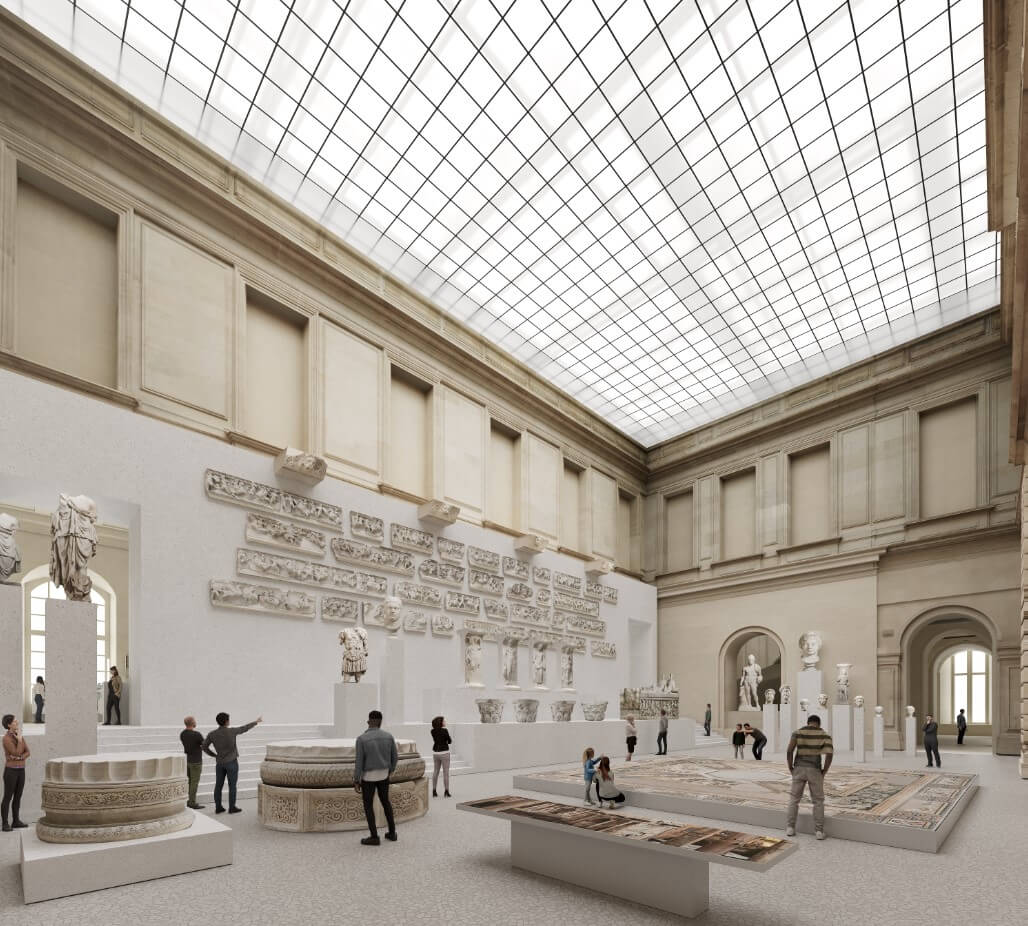wHY Architecture has been selected by Musée du Louvre for two major commissions at its historic Paris complex. The New York office will create scenography for the new Department of Byzantine and Eastern Christian Art, and refurbish the Louvre’s Roman antiquities trail.
BGC Studio, a Paris office, will work with wHY Architecture on the project. Kulapat Yantrasast, founder and creative director of wHY Architecture, will be the project leader. For Yantrasast, the commissions bear major importance for his firm which just turned 20 years old.
“The Louvre is a landmark of French heritage and is also an iconic cultural centre of our diverse world,” Yantrasast said in a statement. “I encountered the Louvre for the first time when I was seven years old on my first trip outside of Thailand. I still remember the awe, the beauty, and the power of the arts.”

Since its founding in 2004, wHY Architecture has completed other significant cultural projects at Speed Art Museum, Art Institute of Chicago, Harvard Art Galleries, San Francisco’s Asian Art Museum, American Museum of Natural History, Academy Museum of Motion Pictures, and others. This new project represents wHY Architecture’s first museum project in Europe.
According to Louvre officials, the project will encompass roughly 60,000 square feet. It marks the most significant museographical overhaul undertaken by the Louvre since the Department of Islamic Arts was completed in 2012 by Rudy Ricciotti, Mario Bellini, and Renaud Piérard.
The new Byzantine and Eastern Christian Art Department will become the ninth and newest department at the Louvre. It will contain almost 20,000 works made between the onset of Christianity to the early-20th century. Meanwhile, the revamped Roman antiquities trail will have relics from the Mediterranean basin produced between the 2nd century B.C. to 4th century A.D.
Renderings show the artifacts and antiquities displayed on walls and placed atop plinths. Gallery spaces will be dimly lit with light filtered through the skylights emblematic of the museum’s existing architecture.

In a subterranean space with a cavernous space feel, museum patrons will view large artifacts from mezzanine-level balconies for an aerial perspective of the works.
“Thirty-five years after the major transformation of the Louvre led by American architect I. M. Pei, it is truly is a great responsibility that our American and French team, wHY Architecture and BGC Studio, is selected to undertake another transformation,” Yantrasast continued. “We believe museums are sites of empathy, where people of all backgrounds come to experience and appreciate many diverse cultures and ways of life. The new department at the Louvre will empower that.”
Construction is slated for completion in 2027.

